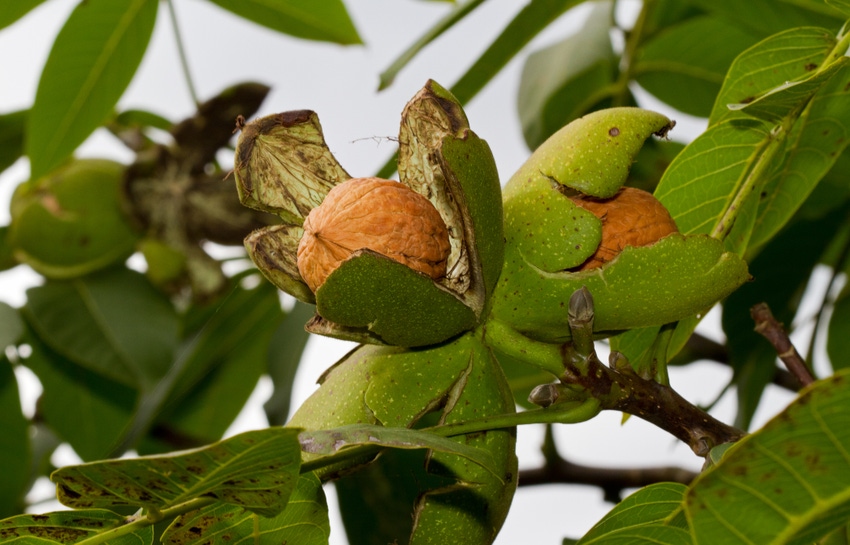
Wanted: EPA registration for ‘Kasumin’ antibiotic for walnut blight control
Walnut blight is a threat to walnut growers worldwide. In the wetter walnut production areas of California, blight can cause serious crop losses. Trials have shown that the antibiotic kasugamycin has great potential in walnut blight disease management.

Public perception of antibiotic use in agriculture is stalling a federal Environmental Protection Agency (EPA) green light for the use of an effective control for a serious walnut disease, University of California researchers believe.
Walnut blight, caused by the bacteria Xanthomonas abroricola juglandis, is a threat to walnut growers worldwide. In the wetter walnut production areas of California, blight can cause serious crop losses. Trials have shown that the antibiotic kasugamycin has great potential in walnut blight disease management.
“They (federal EPA) told us if walnut blight is a problem they want to hear directly from California walnut growers about their need for this product,” said Carl Eidsath, technical support director for the California Walnut Board (CWB) and Commission.
Eidsath added, “I’m hoping they get emails from all 4,000 of our growers.”
In a recent newsletter, the CWB urged all its growers to send e-mails to EPA’s registrations division supporting the need for the California registration of kasugamycin for blight control in walnuts. With federal approval, the California Department of Pesticide Regulation could move forward with their product evaluation.
Joe Grant, recently retired University of California Cooperative Extension (UCCE) farm advisor at San Joaquin County, said the federal agency is using documents intended for animal agriculture in evaluating the antibiotic use for plant disease.
Walnuts are not the only crops affected by the registration delay, say Grant. Citrus and tomato growers also have a stake in the decision to allow the antibiotic use for disease control.
Eidsath said the product, from the company Arysta sold under the trade name Kasumin, has proven to be effective in controlling walnut blight, a serious disease in walnuts that attacks catkins, female blossoms, green shoots, leaves, buds, and the fruit of English walnut.
The pathogen which causes blight can survive one year to the next in twig lesions, living and dead buds, plus diseased fruit which remain on the tree. Nutlets are affected soon after flowering; the level of infection determines economic loss.
The disease has the potential to cause huge losses due to unmarketable nuts, Eidsath said. Walnut blight is endemic in California walnut orchards. Environmental conditions, including wet spring weather and the disease level present in the orchard, can spark outbreaks that may not be effectively controlled over the long term with commonly used copper-based products.
According to the CWB, the extended period of susceptibility and few choices for effective control are the main challenges in walnut blight control.
The heightened need for an alternative control product is being spurred by the development of resistance to currently used products. The copper compounds growers currently use against blight are becoming less effective, said Eidsath.
Kasumin has gone through all the channels for registration and is proven as an effective alternative where resistance is encountered, he says.
Depending on the weather, Eidsath says spray applications of Kasumin 7-10 days apart with alternate products can control blight and slow the resistance to copper compound products.
“With Kasumin, we can gain another 20 years of use from the standard treatments,” Eidsath said.
The antibiotic is already in use in several other states on pome fruits, and is registered for use in Japan.
UC researcher Jim Adaskaveg has conducted extensive work with Kasumin and has provided information and studies to Arysta to submit to EPA.
Eidsath, noting that all work on the registration for Kasumin was halted by EPA last year, said two things are working in favor for the walnut industry.
“Kasumin is plant specific, and all plant antibiotics account for .01 percent of total antibiotic use in agriculture.”
About the Author(s)
You May Also Like



